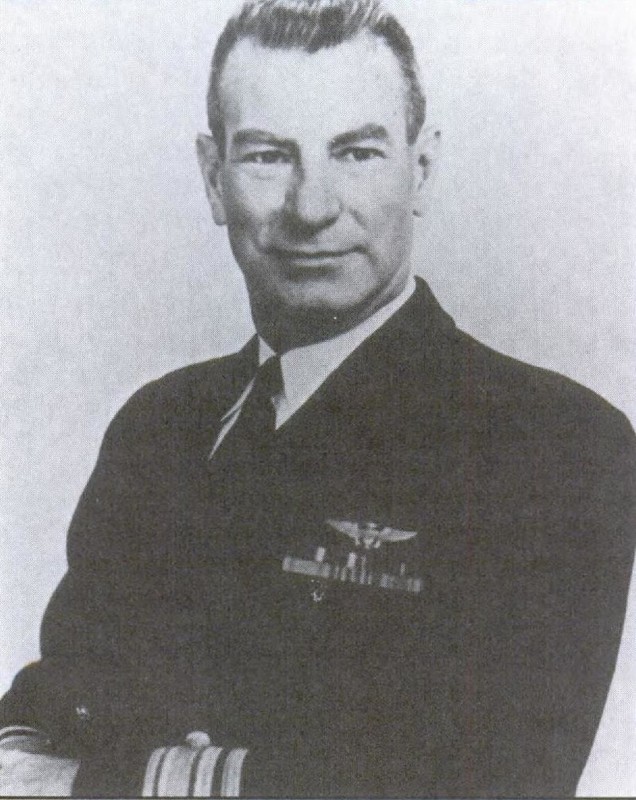Glenmore
Introduction
Text-to-speech Audio
Images
Rear Admiral Chester Ward, JAG US Navy & Glenmore owner 1945-1971

Backstory and Context
Text-to-speech Audio
Glenmore is perched on a bluff overlooking the Potomac River. The single-family home was built around 1906 by William Florian Roberts as a retreat from life in Washington, D.C. where he worked as a printer. This part of Arlington was a rural natural area in the early 20th century. In the early days, the Roberts family would arrive by boat and climb up to the clifftop to access the house.
Designed by a D.C. architect named Appleton P. Clark, the house was on a 44-acre tract but is now down to about 37,000 square feet. Parts of the surroundings literally went into the house - logs made from forest trees for walls and stone quarried from the bluff for the foundation and chimney. The logs were covered in shingle siding but the shingles were later hidden by a stucco layer. Hints of the log structure are visible as rafters in the eaves of the gable roof. The home is made of two sections in a rectangular plan joined at right angles; each section has a gable roofs but one roof is taller than the other.
By the early 1930s the Construction of the George Washington Memorial Parkway paralleling the river cut off the house from easy access to the cliff edge. The Roberts family still enjoyed their weekend retreat even with cars passing so close to the home.
In 1945 Glenmore was purchased by Rear Admiral Chester Ward, the Judge Advocate General (JAG) of the U.S. Navy from 1956 to 1960. Ward was a Conservative author who authored or co-authored several books with Phyllis Schaffly focused on the Cold War. Ward undertook major remodeling, including the stucco; he had glass windows installed including a large picture window on the river-facing side of the house. His new garage was built from glass and flagstone. Ward rented out the home to a succession of military bachelors who threw many pool-side parties
If these walls could talk, they would have plenty to say. Glenmore was the site of many weekend celebrations since the Roberts era. Glenmore was the site of an engagement party for first daughter Lynda Byrd Johnson and her military beau and future Virginia Governor Chuck Robb. Another first daughter, Tricia Nixon, also partied here. The same couple has owned Glenmore since the 1980s and renovated the house as their home. They hosted a reunion party in 2006 for 35 bachelors who rented the house, asking each to bring a memory of their time in the glass party house.
The houses's land tract is now at the end of a cul-de-sac with modern single-family homes as close neighbors in the River Estates subdivision. Glenmore was designated a local historic district by Arlington County in 1986 due to its association with Clark, the local architect, and for its representation of rural, undeveloped Arlington as a retreat for wealthy Washingtonians in the early 20th century.
Sources
Arlington County Government. Glenmore, Projects & Planning. Accessed November 9th 2019. https://projects.arlingtonva.us/projects/glenmore/.
Arlington Historical Society. Arlington County Historic Sites Map. Accessed November 9th 2019. https://arlingtonhistoricalsociety.org/historical-sites/
Brown, Larry J.. Memo re: Historic District Recommendation for Glenmore, Glenmore.pdf. April 29th 1986. Accessed November 9th 2019. https://projects.arlingtonva.us/wp-content/uploads/sites/31/2014/03/Glenmore.pdf.
Clark, Charlie . "Our Man in Arlington." Falls Church News-Press (Falls Church) March 29th 2018, 15-15.
Jay M. Siegel, US Navy, public domain, Wikimedia
